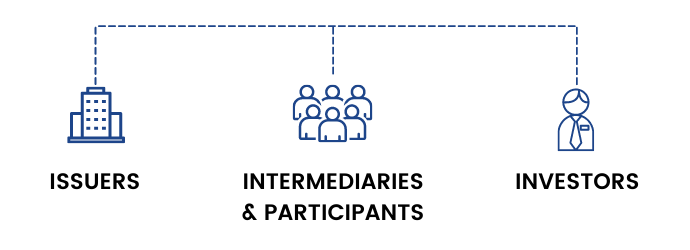What Are The Categories of Investors in an IPO?
There are four different types of investors in an IPO. They are:
Retail Individual Investors (RII): This category of investors cannot apply for a bid more than ₹ 200,000. NRIs who apply less than ₹200,000 are considered as RII category.
High Net worth individuals (HNI)/ Non institutional investors (NIIs): If retail investors apply for more than ₹ 200,000 are considered as High Net worth individuals (HNIs). NIIs are individual investors like NRI’s companies, trusts, etc. who bid for more than ₹ 200,000. They are not required to register with SEBI like RIIs.
Qualified Institutional Bidders (QIBs): QIBs are those institutional investors who have expertise and the financial strengths to analyze and invest in the capital markets. They are mostly financial institutions like Banks, FIIs, Mutual Funds who are registered with SEBI.
Anchor Investors: Anchor investor introduced by SEBI in 2009, refers to a QIB making an application for a value of ₹ 10 crores or more through the book building process. They invest in an IPO before it opens to the public and thereby attract investors and gain public confidence before the IPO goes public.
In a book-built issue, allocation of securities to Retail Individual Investors (RIIs), Non-Institutional Investors (NIIs), and Qualified Institutional Buyers (QIBs) are in the ratio of 35: 15: 50 respectively.
In case of fixed price issues a minimum of 50% of securities are required to be allocated to Retail Individual Investors (RIIs) and balance to other investors including corporate bodies/ institutions irrespective of the number of securities applied for.
QIB's are prohibited by SEBI guidelines to withdraw their bids after the close of the IPOs. Retail and non-institutional bidders are permitted to withdraw their bids until the day of allotment.
Who are the Participants in an IPO?

There are three broad categories of participants in an IPO. They are:
Issuers
- Unlisted companies. Ex- Bundl Technologies Pvt. Ltd.(Swiggy), ANI Technologies Pvt. Ltd.(OLA) etc.
- Listed companies. Ex- TATA steel, ITC etc.
Intermediaries and participants
- Merchant Banks. Ex- Goldman Sachs, Morgan Stanley etc.
- Syndicate members. Ex- Kotak Securities, Axis Capital etc.
- Underwriters. Ex- UTI, SBI Capital market etc.
- Depositaries. Ex- CDSL & NSDL
- Stock exchanges. NSE, BSE, MCX etc.
Investors
- Retail Investors
- Non institutional investors
- Qualified Institutional Bidders
- Anchor investors
Is IPO grading mandatory? How does it help investors?
SEBI has made it mandatory for all IPOs to obtain grading from at least one credit rating agency registered with SEBI. The grade indicates the assessment of the company’s fundamentals, future growth potential, and market comparisons with other listed equities at the time of issuance. This is an additional tool for investors to facilitate their analysis for an investment decision. IPO grading is generally assigned on a five-point scale with higher grades indicating strong fundamentals and vice versa.


 Sign up with Google
Sign up with Google


